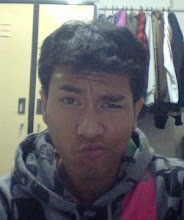For many job seekers an interview can seem too much like an inquisition. That's usually because they're doing all the answering and none of the asking.
"Somewhere in the interview you have a chance to impress the employer on your own terms and see if the job is a good fit for you," says Florida-based career coach and executive recruiter Jonathan Milligan. "And you absolutely should take this opportunity. By asking the right questions you can determine if the job is right for you and also show you're engaged and interested in the job."
Employment experts identify five key question areas where you can gain insight, put yourself in a good light, and take some control in the interview.
Identify their pain.
· "What is one of the biggest problems the company faces that someone with my background could help alleviate?"
· "If I started in this job tomorrow, what would be my two most pressing priorities?"
Find out where the company is going.
· "Where do you see this department/company in five years?"
· "What are the long and short term goals of the company/department/work group?"
Determine whether you'd fit in.
· "How would you describe your company's culture?
· "What tangible and intangible qualities attracted you to the organization?"
Show you're really interested.
· "What additional information can I provide about my qualifications?"
· "What are the next steps in the selection process?"
Ask follow-ups.
· "Can you clarify what you said about ...?"
· "Can you give me some examples of ...?"
"By requesting clarification or examples, you show interviewers you care and that you're thinking deeply about the issues they brought up," says learning and development consultant Bill Denyer. He suggests taking notes in the interview, using keywords to jog your memory of what was discussed but not burying your head in your notebook.
What you don't want to ask are questions with obvious answers, according to Susan RoAne, author of "Face to Face: How to Reclaim the Personal Touch in a Digital World."
"You really need to do your homework," RoAne tells Yahoo! HotJobs. "Before the interview go to the company website and use search engines to get up to speed, and browse social networking sites like Yahoo! Groups to see who knows what about the company."
"And never, never ask an interviewer, 'How long is the vacation'? or, 'What does your company do?'" RoAne added.
Some experts suggest waiting for the inevitable "Do you have any questions for us?" at the interview, while others recommend looking for conversation openings to ask appropriate questions.
"It depends on the situation," Milligan says. "If the interviewer seems to be reading from a sheet of questions, don't interrupt. If it's a more casual conversation, you may have chances to turn the questions back on the interviewer."









